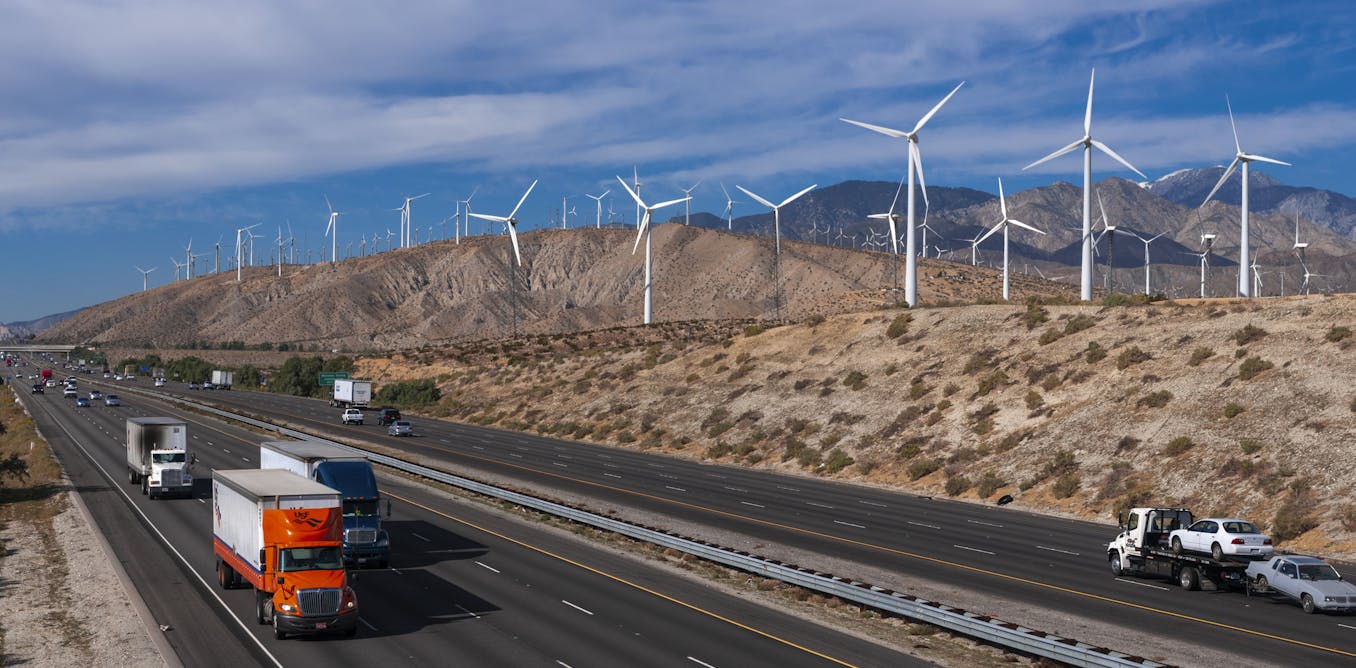
A new chapter in climate leadership
California is once again at the center of climate innovation. Known for leading on vehicle emissions and cap-and-trade programs, the state is now pushing boundaries in carbon dioxide removal (CDR) by establishing measurable targets, creating dedicated procurement programs, and layering multiple legislative mandates.
Unlike other states, California has defined specific annual CO₂ removal goals and has implemented a statewide framework that actively guides both nature-based and tech-driven solutions. This level of integration and accountability is unmatched in other state-led climate efforts.
As global and national uncertainty grows around federal climate policies, California is stepping in with a robust strategy that mixes regulation, technology, and big-picture thinking.
>> RELATED: Plan to Build California’s First Carbon Removal and Storage Project Gets a Big Boost

Why carbon removal matters
Getting to net-zero emissions isn’t just about cutting pollution. It also means cleaning up what's already in the air. That’s where CDR comes in, using nature and tech to pull CO2 out of the atmosphere. California’s bold targets, set in its 2022 Scoping Plan, aim for 7 million metric tons of CO2 removed by 2030 and 75 million metric tons by 2045.
Projected Carbon Removal Targets in California
Metric Tons of CO₂ to be Removed Annually
| Year | Target CO₂ Removal (Million Metric Tons) | Primary Method |
|---|---|---|
| 2025 | 2 | Pilot DAC & Biomass |
| 2030 | 7 | Scaled DAC + Land Projects |
| 2040 | 40 | Tech-Dominant Mix |
| 2045 | 75 | Full Integration |
Laying the policy groundwork
California’s carbon removal framework isn’t just a wishlist. It’s backed by real legislation. The California Climate Crisis Act (AB 1279) sets legally binding net-zero goals by 2045, mandating an 85% reduction in emissions from 1990 levels. That ensures carbon removal won’t become a loophole for continued pollution.
Meanwhile, SB 905 provides the regulatory muscle for CDR and carbon capture, utilization and storage (CCUS). It covers everything from permitting to safety standards, ensuring carbon projects roll out responsibly and equitably.
Key California Carbon Removal Policies
| Bill | Purpose | Status |
|---|---|---|
| AB 1279 | Legally binds net-zero emissions by 2045 with 85% reductions from 1990 levels. | Enacted 2022 |
| SB 905 | Creates regulatory framework for CDR and CCUS deployment in CA. | Enacted 2022 |
| SB 643 | Allocates $50M to buy CDR credits from CA-based projects. | Passed Senate, under Assembly review |
| SB 88 | Measures biomass emissions from wildfire mitigation used for CDR. | Advancing through Assembly |
A smart mix of methods
California’s strategy goes beyond just planting trees. It combines nature-based and tech-heavy solutions that each contribute differently to the state’s carbon removal targets.
Direct air capture, for example, offers scalable, long-duration CO₂ removal, while biomass carbon removal leverages wildfire mitigation efforts to reduce waste and store carbon.
Marine carbon dioxide removal and carbon mineralization provide emerging, experimental pathways that diversify risk and increase the total capacity for carbon drawdown.
- Direct air capture, like the kind developed by Climeworks
- Biomass carbon removal from wildfire mitigation
- Carbon mineralization and enhanced rock weathering
- Marine carbon dioxide removal, explored through AB 1086
These approaches vary in cost, scale, and permanence. That’s why the state is diversifying investments instead of betting on one.

>> In Other News: Senate Bill Would Raise Value of Tax Credit to Use Captured CO2 to Produce More Oil
Public money, private momentum
California’s public sector is putting serious money on the table. SB 643, introduced by State Sen. Anna Caballero, would direct the state to spend $50 million on carbon removal credits from diverse, in-state projects. This would signal demand and de-risk early investment, especially for startups.
It follows the Department of Energy's procurement program, which launched under the Biden administration but is no longer continuing. California stepping in helps fill that gap and keep momentum going.
Keeping it real with governance
While innovation is key, accountability is non-negotiable. That’s why SB 905 mandates the California Air Resources Board (CARB) to regulate six big issues:
- Project permitting
- Long-term storage safety
- Financial responsibility
- Monitoring systems
- Pipeline infrastructure
- Community impact safeguards
SB 88, another active bill, focuses on measuring lifecycle emissions from biomass used in CDR, especially from wildfire-related sources. This kind of scrutiny is what builds public trust.
Lessons for the rest of the country
California isn’t the only state working on carbon removal. But it's the first to:
- Set quantitative CDR targets in its climate plan
- Enact multiple overlapping laws addressing both technology and land-based methods
- Build public procurement mechanisms for CDR credits
States like New York and Washington have also passed strong emissions laws. For example, New York has legislated an 85% reduction in greenhouse gas emissions from 1990 levels by 2050 and is investing in geological carbon storage. Washington’s Climate Commitment Act mandates a 95% reduction in GHG emissions by 2050 and supports pilot programs in direct air capture and carbon mineralization. Few have mapped out carbon removal in such a detailed and forward-thinking way.
Industry is watching
CDR startups, clean tech investors, and big emitters all have a stake here. California’s policies signal long-term opportunity and stability. According to Katie Lebling, senior associate at World Resources Institute, "The urgency of the climate crisis demands bold, creative approaches like the ones California is testing."
As carbon removal markets grow, companies like CarbonCapture Inc., Heirloom, and Charm Industrial are likely to ramp up deployments in California, attracted by the policy clarity and potential funding.
A pathway worth following
California’s model doesn’t just help the state hit its own goals. It lays out a repeatable playbook for others. Define emissions limits. Make carbon removal complementary. Create demand through procurement. Ensure safety and equity through regulation. Then fund the science and tech to push boundaries.
That’s how you lead a climate transformation. That’s how California is doing it.
Subscribe to the newsletter
Daily decarbonization data and news delivered to your inbox
Follow the money flow of climate, technology, and energy investments to uncover new opportunities and jobs.
Companies
Latest issues
-
The Three-Continent Move That Redefines SAF
Wishing everyone a restful holiday season.🎄🎅🎁 Inside this Issue ✈️ Cathay Goes Global With SAF in Three-Continent Fuel Deal 🧪 Proton Ventures Partners With Barents Blue For Realization Of The Bar...
-
Can One Truck Fix Hydrogen’s Biggest Problem?
Inside This Issue 🚛 Alberta's Shared Truck Model Could Crack Hydrogen Adoption ✈️ ZeroAvia Completes Financing Round 🌾 Frontier And NULIFE Scale New Biowaste Carbon Removal Approach 🔥 WAGABOX® Of ...
-
North America’s Carbon Removal Year in Review: Winners, Losers, Surprises
Inside This Issue 🌎 North America's Carbon Removal Year in Review: The Deals, Policies, and Milestones That Shaped 2025 🚢 Hapag-Lloyd And North Sea Container Line Win ZEMBA Second E-Fuel Tender 🪨 ...
Company Announcements
-
ClimeFi Announces New 85,000 Tonne Procurement Round
In its latest procurement round, ClimeFi has enabled more than US$18m in durable carbon removal purchases across eight removal pathways: Biochar, Bioenergy with Carbon Capture and Storage (BECCS), ...
-
Vallourec, a world leader in premium seamless tubular solutions, and Geostock, a global specialist in underground storage of energy, have signed a Memorandum of Understanding (MoU) to strengthen th...
-
CMA CGM, DHL Step Up Ocean Freight Decarbonization with Biofuel Deal
DHL Global Forwarding and shipping group CMA CGM have agreed to jointly use 8,990 metric tons of second-generation biofuel to reduce emissions from ocean freight. The initiative is expected to cut...
-
Next-Generation Gas Turbine Control System For Thermal Power Plants Completes Functional Testing
Integration of Mitsubishi Power's control technology with Mitsubishi Electric's high-speed data processing technology Supports rapid load adjustments and diverse fuels including hydrogen Tokyo, ...

